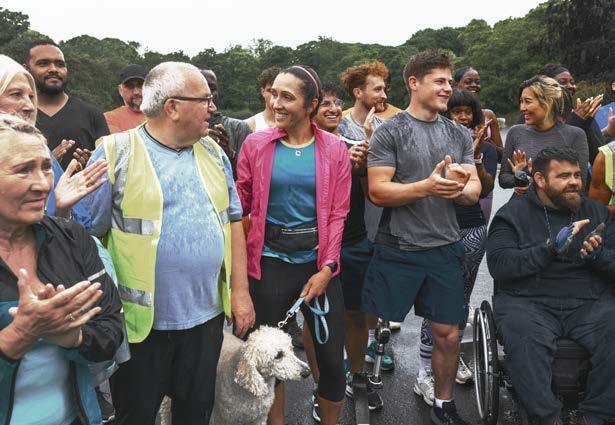

STRENGTHENING OUR COMMUNITIES
A LETTER FROM SANFORD HEALTH PRESIDENT AND CEO BILL GASSEN
At Sanford Health, we believe everyone should have access to world-class health care, regardless of their zip code. As the leading non-profit provider of rural health care in the U.S., Sanford Health is committed to supporting our patients, residents and communities in ways that extend beyond the walls of our clinics, hospitals and facilities. It is in this spirit that I am honored to share with you our 2023-2024 community commitment report.
In this report, you will learn how Sanford Health is paving the way for a more accessible, affordable and high-quality health care experience for our patients, residents and health plan members. Over the past year, we expanded our mission to serve more communities than ever before through partnerships in western South Dakota and Wyoming, and Wisconsin and the upper peninsula of Michigan. We look forward to investing in these new regions, just as we do in every other community where we provide care.


At Sanford Health, we consider it a privilege to provide exceptional health care to every patient, regardless of their ability to pay. In 2023, we invested more than $726 million in the communities we call home, with $160 million going toward free or reducedcost health care services for people who otherwise may have gone without care.
I am proud of these investments, and I also know that health care doesn’t stop as soon as a patient leaves the hospital or clinic. That is why Sanford Health also invests significantly in programs and activities that support the health, safety and well-being of those in our communities. In 2023, we invested $45 million in community programs related to child care, mentoring, violence prevention, disaster readiness and much more.
As you read the following pages, you will see examples that speak to Sanford Health’s commitment to a healthy and thriving future for all. These efforts are possible thanks to the talented, dedicated caregivers in our Sanford family and our incredible community partners. Together, we remain committed to establishing healthy communities throughout the upper Midwest for generations to come.
With gratitude,


ABOUT
About Sanford Health Sanford Health, the largest rural health system in the United States, is dedicated to transforming the health care experience and providing access to worldclass health care in America’s heartland. Headquartered in Sioux Falls, South Dakota, the organization has 53,000 employees and serves over 2 million patients and nearly 425,000 health plan members across the upper Midwest including South Dakota, North Dakota, Minnesota, Wyoming, Iowa, Wisconsin and the Upper Peninsula of Michigan. The integrated nonprofit health system includes a network of 56 hospitals, 288 clinic locations, 147 senior care communities, 4,000 physicians and advanced practice providers and nearly 1,500 active clinical trials and studies. The organization’s transformational virtual care initiative brings patients closer to care with access to 78 specialties. Learn more about Sanford Health’s commitment to shaping the future of rural health care across the lifespan at sanfordhealth.org or Sanford Health News.
OUR MISSION, VISION AND VALUES
Our Mission
To care, comfort and cure.
Our Vision
To be the premier rural health system in the United States.
Our Values
• Service
• Courage
• Humility
• Stewardship
• Family
COMMUNITY HEALTH NEEDS ASSESSMENT
Every three years, Sanford Health conducts a Community Health Needs Assessment (CHNA) to learn more about the health and well-being of the populations we serve. The CHNA allows us to identify and address unmet health needs through local partnership and initiatives. Responses from the 2023 survey help guide our work and build upon previous progress to develop new community health initiatives, offerings and programs.
COMMITMENT
CARING FOR OUR PATIENTS AND OUR COMMUNITIES
As the nation’s largest rural nonprofit health system, Sanford Health is committed to enhancing the well-being of those we serve.
In 2023, Sanford Health invested over $726 million in our communities, providing essential services and programs aimed at improving access to care and positively impacting health and well-being. The following is detailed information regarding Sanford Health’s 2023 Form 990 for the health services division.
$251 MILLION
$160 MILLION
$155 MILLION
$251 million in subsidized health services not reimbursed by other sources. Sanford Health offers these clinical services despite financial loss in order to ensure access to essential care for our communities.
$160 million in uncompensated care from reduced-cost health care services provided through financial assistance or services left unpaid due to financial hardship or lack of insurance.
$155 million in absorption of underpayments from Medicaid and Medicare for acute care services. Medicaid and Medicare reimburse health systems but at a rate that is often lower than the actual cost of providing care. Sanford Health is dedicated to treating all patients, regardless of their ability to pay.
$58 million in community health improvement services that safeguard or improve public health and expand access to health care services.
$45 million in community programs related to child care, mentoring, violence prevention, disaster readiness and public emergency preparedness.
$38 million in educational programs that train health care professionals, helping to ensure our communities have a strong health care workforce for years to come.
$19 million in medical research studies or investigations to increase health and disease knowledge.
CARE FOR ALL
Sanford Health is proud to provide care to anyone who comes to us in need, regardless of their ability to pay. As a nonprofit organization, we provide a robust community care program to help patients who are uninsured or experiencing financial hardship access care. Sanford Health never denies medically necessary care to patients with medical debt.
FINANCIAL ASSISTANCE POLICY
Sanford Health offers financial assistance for patients experiencing medical emergencies and challenges that require immediate care. This assistance, which can range from cost reductions to complete forgiveness, is provided to patients demonstrating financial need.
COMMUNITY RESOURCE CONNECTIONS
Sanford Health has a database to help patients find and access community resources. The website sanford.findhelp.com compiles information about housing, food, transportation and child care. After entering their zip code, a patient can see free or reduced-cost programs nearby. While the resource is available to anyone in need, Sanford Health patients receive a link to access it from their after-visit summary or their My Sanford Chart account.
In 2024, referrals to sanford.findhelp.com increased 79.9% from 2023. The most common search topics were related to food, housing, health and financial needs.
Clinicians, nurses and other caregivers can also navigate the site on behalf of patients, referring them directly to assistance. The site is translated into multiple languages and allows staff to print, text or email information.
CARE MANAGEMENT
Sanford Health’s care management services connect families with vital resources to help create healthier, more cohesive and empowered communities. Care management emphasizes preventive care, encouraging patients to proactively engage with their health care, manage chronic conditions and adopt healthier lifestyles. There are many ways care management helps patients, caregivers and health care providers improve outcomes.
• Improved access to services: Ensures timely and appropriate care
• Enhanced social support: Strengthens connections to foster well-being
• Increased resource efficiency: Maximizes the impact of resources
• Empowerment and self-sufficiency: Encourages patients to proactively engage in their care
• Improved well-being: Addresses holistic needs to ensure better health outcomes
• Advocacy and systemic solutions: Improve access to care for all
• Better trust in systems: Builds confidence in health systems through long-term relationships
ACCESS
EXPANDED ACCESS
Rural populations are more likely to travel long distances for health care, especially subspecialty services. Patients may face barriers paying for fuel and lodging, taking time off from work, traveling or arranging child care. Sanford Health is committed to ensuring our patients have access to high-quality care no matter where they live or what health challenges they face. As an integrated health system, we are uniquely positioned to improve the overall health of the populations we serve through new, innovative care delivery models. Open 24/7, 365 days a year, we are available whenever and wherever our patients need us, and we are committed to bringing care closer to home.
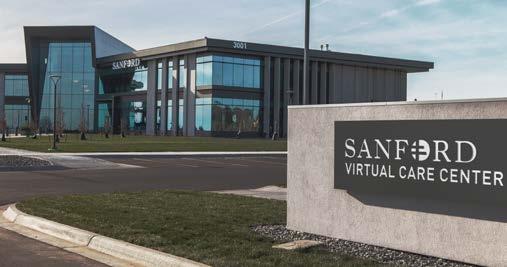
VIRTUAL CARE CENTER
The new Sanford Virtual Care Center (VCC) is a flagship command center that supports virtual health care in rural communities. Two-thirds of our patients who used virtual care in the last year live more than 30 miles from a major medical center. The VCC continues to enhance and expand virtual care offerings. Since 2011, Sanford Health has served over 1.7 million people virtually, saving our patients 42.3 million miles.
Made possible by a $350 million gift from philanthropist T. Denny Sanford aimed at supporting rural health initiatives, the VCC is now home to Sanford Health initiatives focused on three core pillars: education, innovation and clinical care.
• The Education Institute is a learning environment for caregivers to advance their virtual care skills and develop new skills to ensure the highest quality of care and the best patient experiences. It includes simulation spaces where medical students, residents, clinicians and nurses can use augmented reality and virtual reality tools to train for the next generation of care delivery.
• The Innovation Center is the first accelerator space in the nation that specifically focuses on AI tools and emerging technology designed to advance rural care delivery. Technology partners collaborate with providers to co-develop new software, hardware and care delivery models. In addition, a patient and family experience room allows patients to test new digital health tools and provide their feedback.
• In the clinical service delivery space, both patients and caregivers will experience the flexibility and convenience of on-demand care. This space will be home to My Sanford Nurse, direct-to-consumer acute care and virtual nursing.
The VCC has a direct connection to Sanford Health’s satellite clinics, giving patients the option to get care close to home with additional support and expertise available virtually.

COLOGUARD SCREENING KITS
Colorectal cancer is the second leading cause of cancer-related deaths among men and women in the U.S., with 1 in 24 men and 1 in 26 women developing the disease in their lifetime. To enhance preventive care, Sanford Health launched an initiative to address screening gaps. We mailed more than 45,000 stool-based testing kits to average-risk patients who were overdue for screening or had never been screened. These at-home kits provide a convenient option for early detection, and patients with abnormal results are promptly contacted to schedule follow-up colonoscopies.
VETERAN INTEROPERABILITY PLEDGE
Sanford Health is among 13 community health systems sharing data to improve the care experience for veterans regardless of where they receive their care. Through this pledge, Sanford Health:
• Seamlessly exchanges information about care requested and provided
• Saves money for veterans by ensuring they are taking advantage of community resources
• Connects veterans with VA benefits, including ones for toxic exposure-related conditions under the Promise to Address Comprehensive Toxics (PACT) Act of 2022
The data shared as part of this pledge benefits veterans and the providers who care for them, while helping reduce their financial burden.
AMERICAN CANCER SOCIETY LODGING AND TRANSPORTATION
Sanford Health was awarded funds from the American Cancer Society to cover lodging and transportation costs for patients traveling to our cancer centers. Recognizing the financial and emotional burden cancer places on patients and their families, this support helps protect their access to life-saving treatments. To date, the grant has provided $125,000 in travel expenses.

Sanford mails colon cancer test kits to 45,000 patients
By Mick Garry
Recently, researchers have noted a significant increase in colorectal cancer – the second deadliest cancer in the United States – in people under 50.
In 2018, the American Cancer Society lowered its recommendation for colorectal screening to age 45 in response to rising rates of colorectal cancer in younger people. In addition, those who live in the Midwest are statistically more likely to get colon cancer than in some other parts of the country.
The key to better colorectal cancer outcomes is early detection, with a survival rate of almost 89% when diagnosed early.
To make it easier and more convenient for patients to complete their recommended screenings, Sanford Health launched an initiative to mail stool-based screening kits to patients.
Finding cancer
Since launching this initiative in 2024, Sanford Health has mailed 45,000 kits to patients, resulting in the removal of precancerous polyps in more than 495 patients and diagnosing 17 patients with cancer, nearly all of which was in early stages.
Sanford Health rolled the project out in waves, to average-risk patients who were overdue for colorectal screening.

Most patients who take a stool-based test will have normal results, meaning they can wait one to three years to test again. However, if the test returns an abnormal result, the patient will be contacted for follow-up testing.
Smart starting point
Though stool-based tests are not always intended to replace colonoscopies, the kits identify potential issues by detecting blood in stool, which then can then prompt additional diagnosis. The kits are convenient, non-invasive and do not require the preparation that accompanies a colonoscopy.
Home testing can also be a practical option for those who live in remote areas.
“It can be a more accessible, more affordable way to be assured you don’t have signs of colon cancer,” Janet Christianson, a nurse practitioner in family medicine at Sanford Bagley Clearbrook Clinic said. “And when you have a positive test, then you know you should make it more of a priority to get a colonoscopy.”
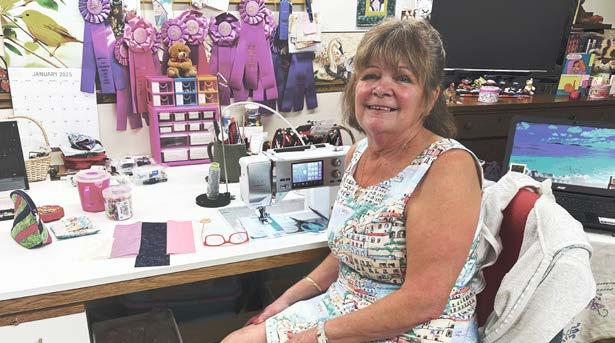
A kit in the mail
Denise Winters of Windom, Minnesota, had been postponing a colonoscopy because it would mean a 10-day break from taking Eliquis, her prescribed blood-thinning medication.
She received her stool-based kit from Sanford Health, took it out of her mailbox, submitted a sample as instructed and sent it back.
She then got a message via MyChart that she had blood in her stool.
“I was very thankful that I got the kit in the mail,” Winters said. “They then informed me that it was in my best interest to have a colonoscopy. My doctor found some polyps and another area he wants to continue to monitor.”
Winters will return in a year for another colonoscopy to make sure everything is OK. For her, the road to better health began with checking the mail.
Originally published on February 11, 2025
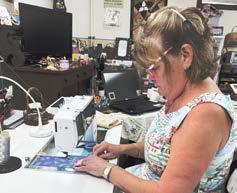

BEHAVIORAL HEALTH
Increasing access to behavioral health care is a vital part of Sanford Health’s efforts to address community health needs. Sanford Health provides comprehensive behavioral health services including psychological evaluations, substance use disorder treatments and a nationally recognized eating disorder program.
As a rural health system, we understand the unique barriers our patients face in accessing behavioral health care, and we are working to address these challenges so every patient can get the support they need, when they need it.
BEHEARD FOR EDUCATORS
Made possible in part by a generous donation from First International Bank & Trust, Sanford Health created a program called Behavioral Health Education, Awareness and Response Development (BeHEARD) for Educators. This program has equipped 159 educators representing 34 schools in South Dakota and North Dakota with the knowledge, skills and confidence to support youth ages 10 to 17 with behavioral health concerns. Sanford Fit has also created multi-media educational resources for youth and caregivers that align with the BeHEARD for Educators course.
Nine in 10 participants shared that the program made it easier for them to understand the feelings of youth. The topics covered include depression, anxiety and stress, substance use and addiction, trauma, suicide, grief and loss, non-suicidal self-injury, eating disorders, wellness and stigma.
Care
TRAUMA TREATMENT AND PROVIDER EDUCATION
The Sanford Traumatic Stress Treatment Center and the Treatment Collaborative for Traumatized Youth in Fargo, North Dakota, serve children and families impacted by trauma and trauma-related stress. A multidisciplinary care


team provides comprehensive assessments, evidence-based behavioral health services and care coordination.
In partnership with the North Dakota Department of Health and Human Services, the Treatment Collaborative for Traumatized Youth (TCTY) was established to advance trauma-focused cognitive behavioral therapy, the gold standard for treating children who have experienced trauma.
Three statewide programs are part of the TCTY. These programs foster healing and resilience for children and families across North Dakota:
• Project HEAL expands resources to address gaps and improve access to culturally relevant trauma services.
• Project REACH is a consortium aimed at reducing barriers, expanding access and advancing trauma care for children across North Dakota.
• Project SPARCS focuses on increasing access to culturally appropriate, evidence-based treatments for youth experiencing chronic stress building sustainable infrastructure to support long-term services.
32 learning collaboratives
123 agencies trained
SUBSTANCE USE DISORDER CLINIC
420 professionals trained
921 clinicians trained
In 2024, Sanford Health launched a clinic in Fargo, North Dakota, to provide comprehensive care and support for individuals struggling with substance use disorders. The clinic offers substance use evaluations, medication-assisted treatment, low-intensity outpatient programming, care coordination, peer support and individual and group counseling services. This was made possible through the North Dakota Opioid Settlement Fund Grant, which helps support education and training for health care providers, as well as expand screening opportunities, brief intervention therapy and referrals to treatment, and the distribution of naloxone to uninsured patients.
VIRTUAL BEHAVIORAL HEALTH EMERGENT ASSESSMENT
The virtual behavioral health emergent assessment program offers rural partners throughout Minnesota, South Dakota and North Dakota virtual access to board-certified psychiatrists. The service is available in emergency rooms in rural communities and inpatient settings. Since the program launched in December 2023, over 620 patients have accessed emergency behavioral health care virtually.
Through the program, Sanford Health also began new, streamlined processes to coordinate admissions to inpatient psychiatric facilities. A Sanford Health nurse contacts inpatient facilities, sends documentation and shares real-time updates with a patient’s provider. The process has helped patients get care faster and gives local nurses and providers more time to spend on patient care.
Panda Cares Center of Hope opens at Children’s
By Jason Anschutz
CARE Clinic
You don’t see a panda every day in downtown Fargo, North Dakota.
But recently, the mascot for Panda Express – and the restaurant group’s charity wing called Panda Cares – showed up to celebrate the opening of a new room at the Sanford Traumatic Stress Treatment Center and Sanford Children’s CARE (Child Abuse Referral and Evaluation) Clinic .
“It’s really inspiring when we can lean on our community, on our leadership, on organizations to support the work that we do,” said Nicola Herting, Ph.D., a pediatric psychologist at Sanford Fargo. “This is really difficult work, and it’s not work we can do alone. We need that support, and we need to be able to provide these spaces and these tools and resources for the work to happen.”
Much-needed respite space
The newly dedicated Panda Cares Center of Hope offers a safe space for children who have gone through intense trauma, ranging from physical or sexual abuse to neglect or the traumatic loss of a loved one. The new space can play an important role in the healing journey for patients like Charleigh Ferguson , this year’s Children’s Miracle Network Champion.

While Sanford doctors use evidence-based trauma therapy to work with patients like Charleigh, the room can also help those children reset after difficult sessions, offering a place to play games or have fun through art, creativity and even video games.
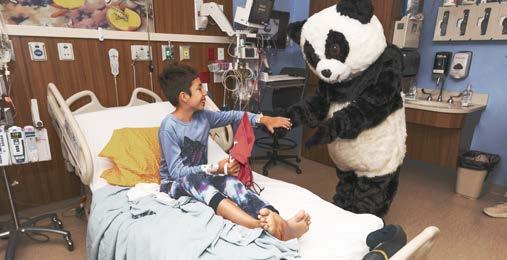
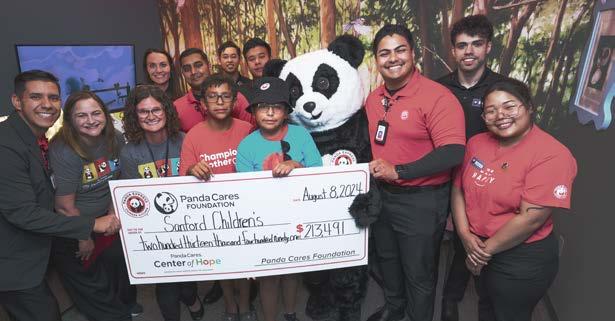
“It creates a safe, child-friendly, trauma-informed environment that feels safe and comfortable and not so medical or clinical,” Dr. Herting said.
The project was made possible thanks to a donation of more than $200,000 from Panda Cares to the Sanford Health Foundation . Both organizations are affiliated with the Children’s Miracle Network, so partnering on this project was a natural fit.
“Donations and support from the Foundation really help our kids thrive,” Dr. Herting said.
Positive impact for kids and doctors
Dr. Herting and her team were thrilled by the Panda Cares donation. She explained how something seemingly simple like a playroom can help so many traumatized children.
“Part of going through really hard things is being impacted by them,” she said. “With that comes symptoms of high avoidance, of feeling really afraid, difficulties trusting people. Creating a space where kids can come and be playful, and feel comfortable and at home, is critical for building that rapport and that trust with the relationship with the therapist, with the provider. And I think this room really helps do that.”
Originally published on October 28, 2024
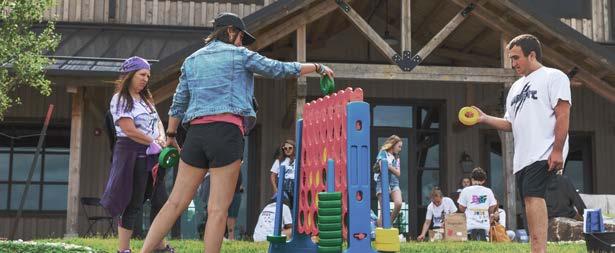
COMMUNITY OUTREACH
Social barriers, such as a lack of access to healthy foods, stable housing, transportation, education and employment, as well as poverty, are particularly acute in rural areas. Sanford Health is active in the communities we serve and invests substantial resources to drive more opportunities and better health for all.
FALLS PREVENTION
According to the National Council on Aging and the Centers for Disease Control and Prevention (CDC), 1 in 4 Americans aged 65+ fall each year and 20% are injured as a result of their fall. Every 20 minutes an older adult dies because of a fall. Good Samaritan hosts falls prevention screening events and follows a CDC falls prevention strategy known as STEADI. The initiative is about “Stopping Elderly Accidents, Deaths, & Injuries.” STEADI features three core elements:
• Screening for fall risk
• Assessing risk factors
• Reducing risk with tailored interventions
The Community Aging in Place, Advancing Better Living for Elders (CAPABLE) program in Sioux Falls, South Dakota and surrounding communities supports adults 60+ years old or those with a physical disability. The goal of the program is to increase mobility, functionality and the capacity to age at home. The 4- to 5-month program integrates services from an occupational therapist, a registered nurse and a maintenance worker who work together with the client to set goals that improve health, independence and safety. Participants learn new skills, exercises and how to work with additional tools, equipment and home modifications.

SANFORD PROMISE EQUIPMENT LENDING LIBRARY
Teachers spend an average of $500 annually on classroom supplies, often including science materials. To reduce this financial burden and enhance hands-on learning opportunities, Sanford Health established the Sanford PROMISE Equipment Lending Library. This provides educators with free access to professional-grade science equipment and experiment materials, ensuring students can engage with the same tools used by scientists.
The Sanford PROMISE program is dedicated to enriching science education and inspiring interest in STEM careers through an accessible, high-quality curriculum. By making science equipment readily available, the Equipment Lending Library empowers educators and provides student scientists and innovators with invaluable, real-world learning experiences.
SANFORD FIT
Sanford Fit creates free resources designed to captivate children’s attention, educate them about important health topics, and inspire healthy behaviors. Since 2019, the program has reached 17 million children in over 200 countries, including more than 1 million users of online resources. In 2024, 170,515 people joined the Fit community and downloaded over 20,000 resources. The Sanford Fit team attended 51 local and regional events, reaching more than 14,000 kids and caregivers. Sanford Fit has worked with BeHEARD for Educators to launch 17 mental health resources for teens. These efforts have reached over 19,000 caregivers online and led to more than 3,500 downloads, providing vital support for families.
CAMPS FOR YOUNG PATIENTS
Sanford Children’s offers two specialized, donor-funded summer camps at no cost to families, thanks to generous support from the Sanford Health Foundation. The camps are designed to support children with unique medical needs. Camp Bring It On is the region’s only residential camp for children with cancer and pediatric cancer survivors. The camp is a safe, supportive environment where children can build confidence and connect with others who share similar experiences. Medical professionals are on-site to ensure the health and safety of every camper while they participate in various therapeutic and fun activities.
Spirit Camp is designed for children with spina bifida and focuses on building physical strength, self-esteem and social skills through adaptive activities. The camp fosters an inclusive environment where children can learn, play and form lasting friendships while receiving education and support related to their condition.
ACL INJURY RISK
In the summer of 2024, Sanford Sports, in partnership with Sanford Orthopedics & Sports Medicine and Sanford Research, provided free ACL injury risk screenings for 485 middle and high school athletes participating in summer strength and conditioning camps at several Fargo-Moorhead regional schools.
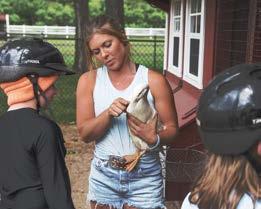
Good Samaritan screenings help prevent falls in older adults
By Aubrey Gilbert
Falling doesn’t have to be an inevitable part of aging. There are many strategies people can use to help prevent falls, starting with education and screenings.
“Any adult older than 65 – that’s really when we start to see the risk of falling increase,” said Amber Jansen, a physical therapist and supervisor of therapy and rehabilitation at Good Samaritan –Bloomfield in Bloomfield, Nebraska.
Consequences of falls
The National Council on Aging and the Centers for Disease Control and Prevention say that 1 in 4 Americans ages 65+ fall each year and 20% are injured. Every 20 minutes, an older adult dies as a result of a fall.
People who have fallen once are more likely to fall again.
“Sometimes that fear creates another risk factor, and the risk keeps increasing, causing more and more issues with falls and balance,” Amber said.
Bloomfield resident Susan Wachter experienced a pelvic fracture.
“I was on the ladder decorating my Christmas tree and shouldn’t have been up there,” Susan said. “I was laid up for three months.”
Good Samaritan’s rehab therapy team helped her recover.
“They just do wonders for you,” said Susan. “A lot of the stuff I’ve done after I graduated, there was no way I could have done most of it before I started doing physical therapy.”

Another Bloomfield resident, Pat Hilfiker, experienced a fall in previous years. She’s had knee surgery which means she can’t get to her feet very easily.
“I was outside working and not watching what I was doing. All of a sudden, you’re down and then it’s hard to get up,” said Pat.
Screenings to prevent falls
Screening events, like the ones held across Good Samaritan, help seniors like Susan and Pat by educating them and assessing their risk so they can take proactive measures.
“Our screening events entail a self-reported falls risk form called the STEADI and also a screening called the TUG – or timed up and go. Both of those are good options to help determine the risk level for a fall,” said Amber. “The events are a really good opportunity to get some ideas on how to make a home safer.”

The Good Samaritan therapy teams provide a comfortable environment for questions. Participants often appreciate the opportunity to learn more about taking care of themselves.
“They remind you of things you don’t think of every day,” said Pat. “This is my third year coming to the fall risk assessment and I’ve learned to wear decent shoes, for one thing.”
Originally published on October 29, 2024
DISCOVERY
MEDICAL RESEARCH
Clinical trials are key to advancing the science of medicine and ensuring patients benefit from new discoveries as quickly as possible. Sanford Research, a multisite research institute, is involved in over 300 clinical trials that aim to improve the prevention, detection, treatment and survivorship of a wide range of diseases.
Clinical trial recruitment has historically been centered in larger urban areas. Sanford Health is committed to pursuing cures and improving treatments for diseases that affect communities in rural America. We fund, test and use clinical trial research, data and best practices to generate better outcomes for our patients.
UNDIAGNOSED DISEASES NETWORK
Many children and adults live with complex medical conditions and abnormalities for which the underlying cause remains unknown. The Undiagnosed Diseases Network (UDN) is a research study supported by the National Institutes of Health (NIH) that helps patients living with an undiagnosed disease and their families, and works toward solving the most challenging medical mysteries. Sanford Children’s Hospital in Sioux Falls, South Dakota, has recently been designated as a new UDN clinical site. Eligible patients experiencing undiagnosed conditions will now be able to enroll in the study, undergo comprehensive evaluations, and have advanced genomic sequencing technologies potentially identify their diagnosis.
IMAGINEYOU

ImagineYou is a no-cost genetic screening study designed to help participants better understand the impact of their DNA on their health. A secure, privacy protected database will allow researchers to study genetic links to health, uncover causes of diseases, and identify new treatment approaches. Sanford Health hopes to enroll 100,000 participants ages 18 and older who will receive confidential information about their:
• Inherited risk for common cancers (breast, ovarian and colorectal)
• Risk for heart disease (hereditary high cholesterol)
• Regional ancestry and traits like caffeine sensitivity and sleep patterns
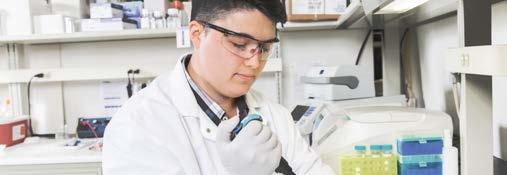

Sanford Imagenetics launches new genetic screening study
By Jon Berg
Sanford Health has launched ImagineYou, a new genetic screening research study through a partnership with Sanford Imagenetics and Helix, the leading precision health organization.
The no-cost population health research study provides genetic screening of conditions with an increased risk for certain cancers and heart disease. These genetic conditions include:
• Familial hypercholesterolemia (hereditary high cholesterol)
• Hereditary breast and ovarian cancer syndrome (BRCA1 and BRCA2 genes)
• Lynch syndrome (hereditary colon cancer)
Participants who show an increased risk for one of these conditions will be referred to genetic counseling for follow-up at no cost. In addition, participants can opt in to learn about their regional ancestry and genetic traits through their Helix account.

“ImagineYou is a very unique genetic screening program that will help patients and their care teams identify potential factors that put them at risk for specific conditions later on in their lifetime,” said Dr. Jeremy Cauwels, chief medical officer at Sanford Health. “This gives patients an opportunity to learn more about their DNA and help them better understand their personal health risks to help them, along with their primary care provider, plan for a healthier future.”
The information patients consent to contribute will be used confidentially by researchers to study how DNA may impact health, what may cause certain diseases, and learn more about how to best treat them so people can live longer, healthier lives. All participants will receive updates on the research study and its impact.
Originally published on July 15, 2024
ADVANCEMENT
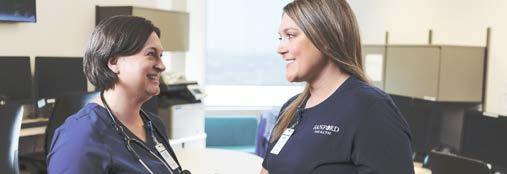
WORKFORCE SUPPORT AND DEVELOPMENT
The future health of our communities rests on our ability to attract and develop highly trained clinicians and employees. Sanford Health has prioritized breakthrough initiatives to support the caregivers we need today and cultivate the workforce we know we will need tomorrow.
PARTNERSHIPS WITH SECONDARY SCHOOLS
Sanford Health facilities serve as clinical and non-clinical training sites for thousands of students every year. We also partner with local secondary schools to provide hands-on learning experiences, mentorship opportunities and exposure to careers in the medical field.
By introducing young people to science, technology, engineering and mathematics (STEM) programs and activities, we can inspire future generations of health care professionals. Through Aspire by Sanford, students in kindergarten through 12th grades have opportunities to start exploring careers in health care and developing the necessary skills for success in the workforce.
TRAINING THE NEXT GENERATION OF PROVIDERS
Sanford Health continues to expand our graduate medical education programs to bring clinical expertise, resources and subspecialties to the upper Midwest. A GI fellowship is the newest three-year program in Sioux Falls, South Dakota.
Over 60% of rural counties do not have a psychiatrist and over 40% do not have a psychologist. Sanford Health is committed to addressing this challenge.
• The Sanford Health-Psychology Internship Consortium prepares future psychologists to provide outstanding, culturally competent and compassionate care in rural communities. The goal is to increase patient access to quality services by creating a pathway to take pre-doctoral interns through their training to become fully licensed psychologists.
• The Psychiatry Residency Program at the University of North Dakota School of Medicine & Health Sciences is a community-based program dedicated to training psychiatrists for diverse practice environments. The program’s affiliation with Sanford Health gives residents access to world-class eating disorder and substance use disorder research.
• Beginning in the summer of 2025, the Sanford Health Postdoctoral Psychology Residency will prepare postdoctoral psychology residents for increased competency with a strong emphasis on clinical excellence and serving underserved communities. Residents will focus on the evaluation and treatment of behavioral health disorders and the complex interplay between emotional and physical well-being.
CENTER FOR PREHOSPITAL CARE AND SIMULATION
The Sanford Health Center for Prehospital Care and Simulation is an education and training facility in Sioux Falls, South Dakota serving domestic and international participants. The training team offers educational opportunities, simulations and courses in clinical areas like emergency medicine, cardiac life support and trauma nursing. Participants include a variety of clinical staff and community partners.
VETERAN AND MILITARY SCHOLARSHIPS
Sanford Health awards four $5,000 scholarships annually to veterans, National Guard and Reserve members, or active duty military members who have demonstrated exceptional leadership and a commitment to their community. The Sanford Health Military and Veteran Scholarships honor individuals who have excelled in service, academics and community involvement, recognizing their dedication to enriching the lives of others and advancing their own personal and professional growth.
GENESIS PROGRAM
The Genesis Program provides community members interested in the health care industry –regardless of their prior education or experience – a pathway to begin a new career. Participants engage in an innovative, 4-week experience that includes rotations through three different roles, exposing them to both clinical and non-clinical positions in the health care industry. After completing the program, a participant could receive an offer for permanent employment, paving the way for a meaningful career.
CLINICIAN WELL-BEING
Our clinician experience team empowers physicians and advanced practice providers (APPs) to provide exceptional care and build their careers while using their expertise to directly impact the future of our health system. The team also prioritizes efforts to reduce stress and burnout.
Our Clinician Well-Being Council is a group of volunteer members led by a physician director. This enterprise-wide council includes physicians, APPs and medical residents who are a resource for all clinicians. Their goal is to foster a culture of wellness, resiliency, growth and work-life integration across the organization.
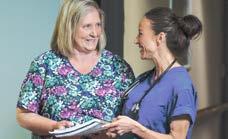
Sanford Health has earned gold recognition from the American Medical Association as a Joy in Medicine organization.
Aspire program gives students a closer look at Sanford jobs
By Mick Garry
Hannah Stewart wanted to see what might be next for her. As a high school student who liked science – her microbiology class was a favorite – she sought to explore career options that pointed toward health care.
Her high school academic counselor told her about the MedX program offered through Aspire by Sanford . This program gives students like Stewart a glimpse into the professional lives of those who work in health care and medicine.
Stewart didn’t know anything about working in a lab but was excited to experience medical laboratory science first-hand through the MedX program.
These programs include both clinical and nonclinical positions. Essentially if it has anything to do with health care, there is a program under the Aspire umbrella that will give students a closer look.
“We went around and toured all the departments within the hospital,” Stewart said. “I did not really expect that when I first got involved in the program. It was awesome. All the people we talked to were super great.”

Stewart is now a medical laboratory scientist for Sanford Health and she definitely knows what she is doing. She is one of many who have participated in the program and gone on to careers in health care. In this case, her involvement in Aspire gave her a glimpse of her future.
“We got hands-on learning,” Stewart said. “We got to lay on a CT bed and see what it was like from a patient’s side. We got to play with an ultrasound machine, and we got to practice giving shots on a fake arm. It wasn’t like someone just talking to you. It was like ‘OK, here is what we do.’”
Collaborating for a cause
Aspire effectively planted a seed for Stewart.
Sanford Health offers many career exploration opportunities for students. The idea is to bridge the gap between lessons learned in the classroom and scope and depth of opportunities in health care.
Aspire director Linda Kirchhevel says the program has steadily expanded offerings.
“We work to meet the needs of Sanford while also meeting the needs of K-12 students and teachers,” Kirchhevel said. “We aim to broaden what people know about health care careers beyond what they have personally experienced.”

Aspire programs come in four education levels:
1. Discover — For elementary students with offerings including career days, summer camps, classroom visits, community partnerships and volunteer opportunities.
2. Explore — For junior high and middle school students with career days, career exploration camps, classroom visits, participation in Sanford PROMISE outreach and volunteer opportunities.
3. Experience — For high school students with multiple opportunities to learn more about individual interests and career exploration in health care. This includes collaboration with Sanford Health professionals and local high schools.
4. Develop — For post-high school students, aimed at developing skills and knowledge through programs featuring lectures, tours and simulations.
Introduction to Sanford Health
Collectively, Aspire plays a vital role in promoting a career in health care to future generations. In so doing, this effort benefits the students it serves and the communities that Sanford Health serves.
“We offer students a behind-the-scenes view of health care settings,” Kirchhevel said. “Many times, these experiences include careers that students did not know even existed.”
In 2023, Aspire facilitated 40,387 interactions with students totaling nearly 1,400 hours. Students or parents interested in Aspire by Sanford Educational Programs can apply online.
Originally published on August 22, 2024
